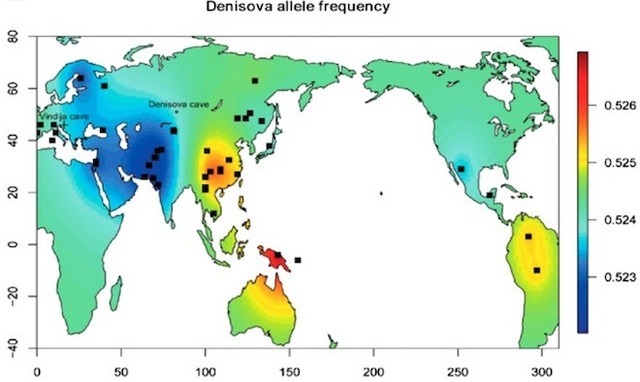Long stretches of Neanderthal and Denisovan DNA helped Homo sapiens adapt

Global map of Denisovan gene frequency in modern human genomes (credit: Image courtesy of Jacobsson and Skoglund/Proceedings of the National Academy of Sciences)
University of Washington geneticist PingHsun Hsieh and his colleagues found Neanderthal and Denisovan versions of some genes in the genomes of people from Melanesia. These versions have several thousand base pairs of DNA that have been duplicated or deleted in the normal human versions. Most of this altered DNA is in or near genes related to metabolism, development, the life cycle of cells, communication among cells, or the immune system.
Those gene variants are surprisingly common among Melanesian peoples, and that could mean that their effects were useful enough that natural selection favored passing them along.
DNA from the DenisovansAs Homo sapiens first ventured beyond Africa, they encountered other hominins already living in Europe and Asia, and those encounters left their mark on our modern genomes. Most people from outside Africa carry a little Neanderthal DNA (it makes up about one to four percent of the average non-African genome), and some people from East Asian, Melanesian, and indigenous Australian populations also have a bit of DNA inherited from Denisovans (about one to five percent of the average genome; it's highest in Melanesian and indigenous and Australian people). Some of that DNA probably stuck with us for tens of thousands of years because it somehow helped our species adapt to new environments and challenges.
Read 13 remaining paragraphs | Comments